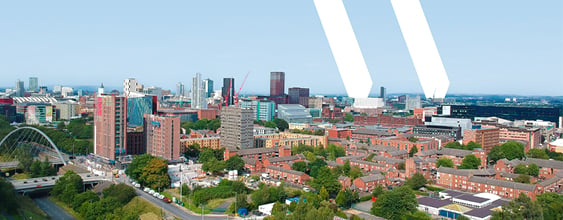HS2 has set a wide range of commitments and targets relating to material resource efficiency and waste reduction for all elements of works across the route. Examples include: developing and implementing opportunities to deliver a circular economy, diverting 95% of excavated arisings from landfill and into high value reuses, and quantifiably demonstrating an improvement in material resource efficiency over the scheme lifecycle.
To quantify improvements in material resource efficiency using a standardised approach across the scheme, HS2 provided a detailed formula (“efficiency metric”) to be applied to all work packages:

Working with the design team and cost planners, WSP identified opportunities to increase the use of ground granulated blast furnace slag (GGBS) as a secondary material in non-structural concrete to 38% (structural) and 66% (non-structural), to reuse over 20,000m3 of site won excavations in landscaping applications, to specify aerated blockwork for internal structures (as opposed to concrete masonry units), and to use 100% recycled content steel for the building superstructures. Of critical importance in the materials efficiency process has been the need to balance mandated design lives for different assets, lifetime cost, and engineering standards – an approach that has required the close collaboration of a range of different specialists.
Using the HS2 formula WSP has, to date, calculated a 44% improvement in lifetime resource efficiency (tonnes/year).*

The Sustainability Team also developed a detailed Operational Waste Management Strategy, to ensure that, post-commissioning, the design intent for minimising waste across the site would be upheld. The document includes management requirements and incentivisation for exemplar practice for storage of train, retail, station accommodation, concourse/platform and other waste streams.
Whilst it is not known what technologies will be available in 120 years, WSP continues to work up end of life considerations for the building to promote integration of circular economy principles in the design, including the establishment of ‘Design for Construction’ methodologies.
*the materials efficiency metric is an iterative figure that is currently undergoing recalculation to incorporate the latest design developments.
By Harry Hazell, Consultant, BREEAM - WSP
















